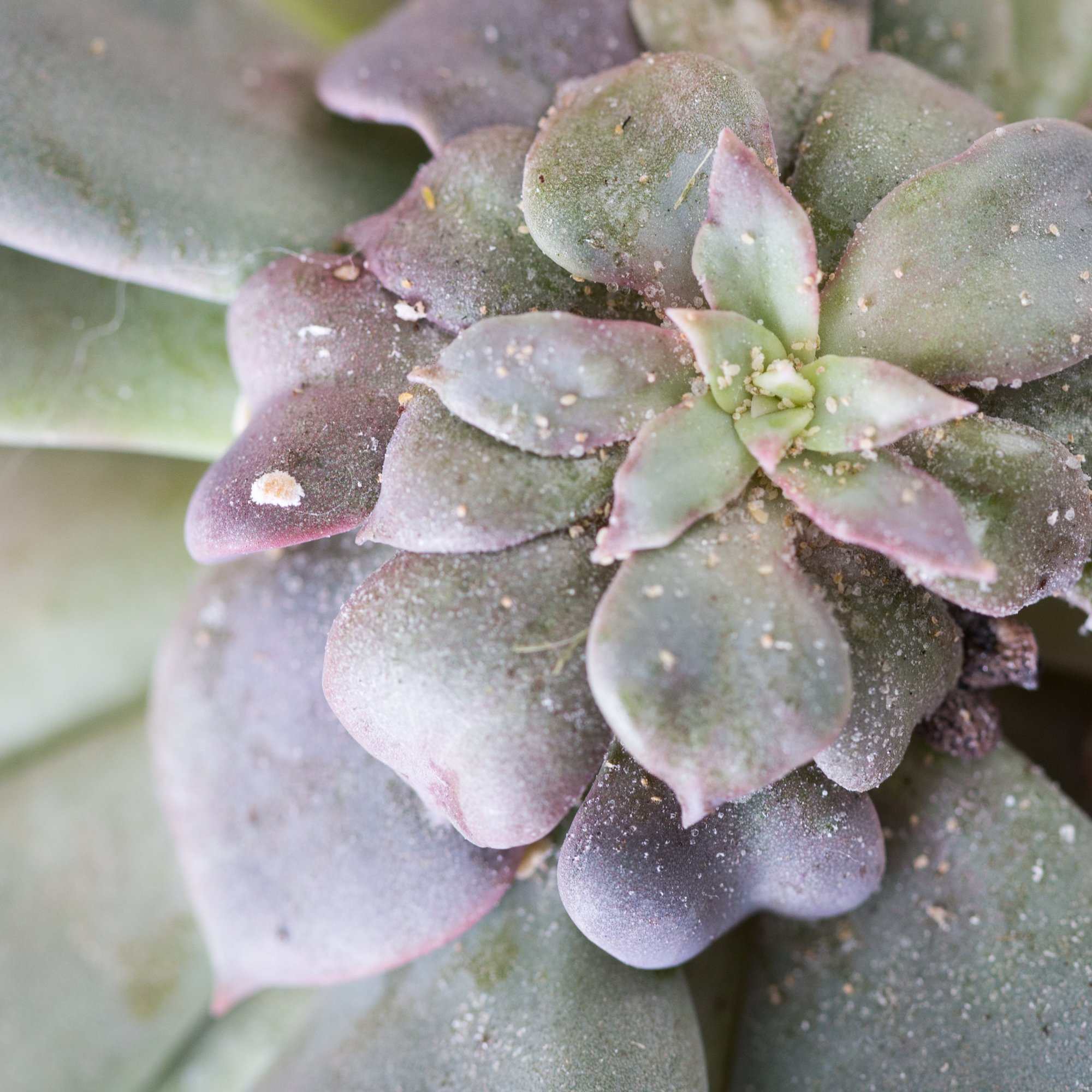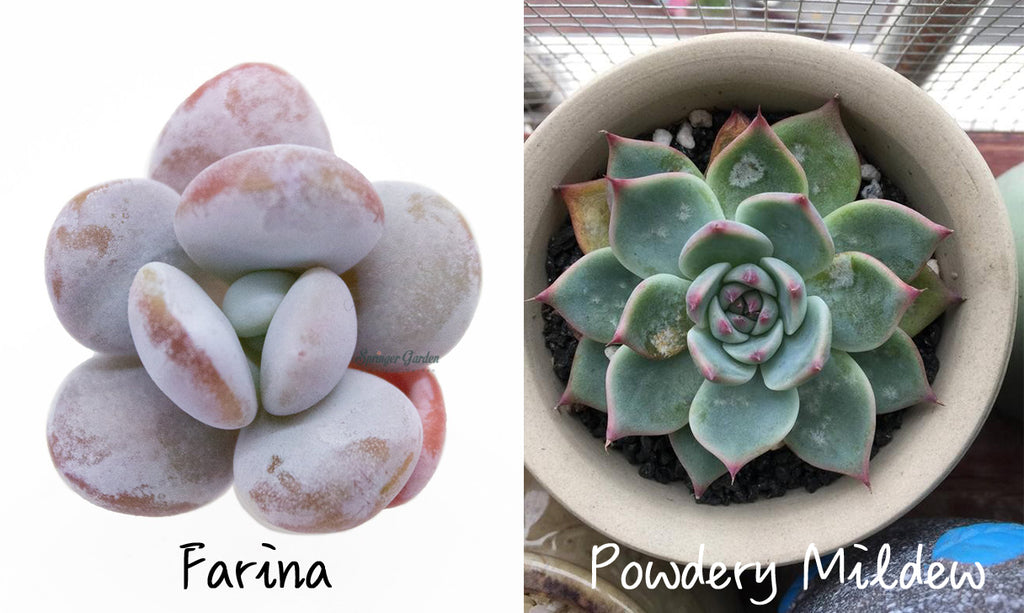If you observe white residue or dust on your succulents, it could either be a sign that your plant needs attention or that it’s perfectly healthy. It is important to assess the situation to determine what action needs to be taken.
When you buy something by clicking on one of the links on this site, we may receive a commission. This does not add to the cost of your purchase and it helps us keep providing you with free content.
Table of Contents
Mealy Bugs
Mealybugs are one of the most frequent pests that affect succulents. These bothersome creatures usually appear as thick webs between the succulent’s leaves, and they can spread quickly, so it is important to take action at once if they are seen. Isolation and treatment of the affected plants should be done as soon as possible.
Find out more information about how to deal with mealy bugs here.
Natural Farina and Coating
To keep your Echeveria healthy, handle the leaves gently as the farina, which is essential for the plant’s health, can be easily removed by touching or rubbing.
Once the leaves are stripped of it, it won’t regrow, but new leaves will be covered in it.
For Kalanchoe luciae, the white powdery substance (known as “bloom”) can be quite concerning and it can be difficult to determine if there are mealy bugs present or not.
Nevertheless, this powdery material on the Kalanchoe is normal and should not be removed, similar to the farina found on Echeveria succulents.
If you think you might be dealing with mealybugs, start by using a hose with a nozzle attachment or a spray bottle to try to wash off any excess buildup. This will not get rid of the nourishing “bloom,” but it can help to remove mealybugs.
Mineral Build Up
If you are watering your succulents with tap water, it’s likely that you will eventually see some mineral deposits accumulating on them, especially with Jade plants and Haworthias.
White spots may appear in the indentations of a jade plant’s leaves. These spots can be removed without causing harm to the plant, but leaving them alone won’t cause any damage either. The jade plant will keep growing regardless of the presence of these spots.
Haworthias and Haworthiopsis plants can accumulate a hard layer of minerals at the base of their rosettes, which can take on an orange or yellow hue with age.
It’s not an issue with Haworthia, but if it looks messy, you can easily clean it off with a cloth or brush.
It is acceptable to water succulents with hard water, which I have been doing for a number of years. However, if there is a high mineral buildup, it is best to switch to filtered or distilled water. Soft water, on the other hand, should be avoided, as the excess salt can result in an altered soil pH, which can be hard for succulents to tolerate.
Powdery Mildew
Although powdery mildew is not a common problem for succulents, it is possible that certain types may be affected.
The leaves of a plant affected by powdery mildew will display a white, splotchy coating that appears in patches.
Typically, powdery mildew is caused by prolonged moisture on the soil or when droplets of water remain on the leaves of a succulent for an extended period.
If you detect any evidence of powdery mildew, it’s critical to separate your succulent quickly to avoid it from being transmitted to other plants. You can take care of the mildew with isopropyl alcohol or an organic, gentle cleanser.
FAQ
How do you get rid of powdery mildew on plants?
Mixing 1 teaspoon of baking soda with 1 quart of water and spraying it on plants is an effective way to treat powdery mildew, which has been demonstrated by several gardeners. An alternative home remedy is applying a milk spray, which can also be successful.
What causes powdery mildew on plants?
Powdery mildew is a type of fungi belonging to the Erysiphaceae family that can cause issues on plants. It is spread by wind, which can carry the spores to other plants far away, allowing it to quickly spread and germinate on the host plant.
Will vinegar treat powdery mildew?
Vinegar can be utilized in a manner similar to mouthwash to control powdery mildew. A mixture of two to three tablespoons of regular apple cider vinegar, which contains 5% acetic acid, can be blended with one gallon of water to create a solution that can be used to tackle this problem.
What kills powdery mildew fast?
is a chemical compound
Reworded: Potassium bicarbonate is a substance composed of potassium, carbon, and hydrogen atoms.
Why does my succulent have white powder?
It is highly probable that powdery mildew is the cause if you observe a white, powdery material on your succulent leaves. It is advisable to act quickly and address the situation as soon as you can, since powdery mildews can spread rapidly.


